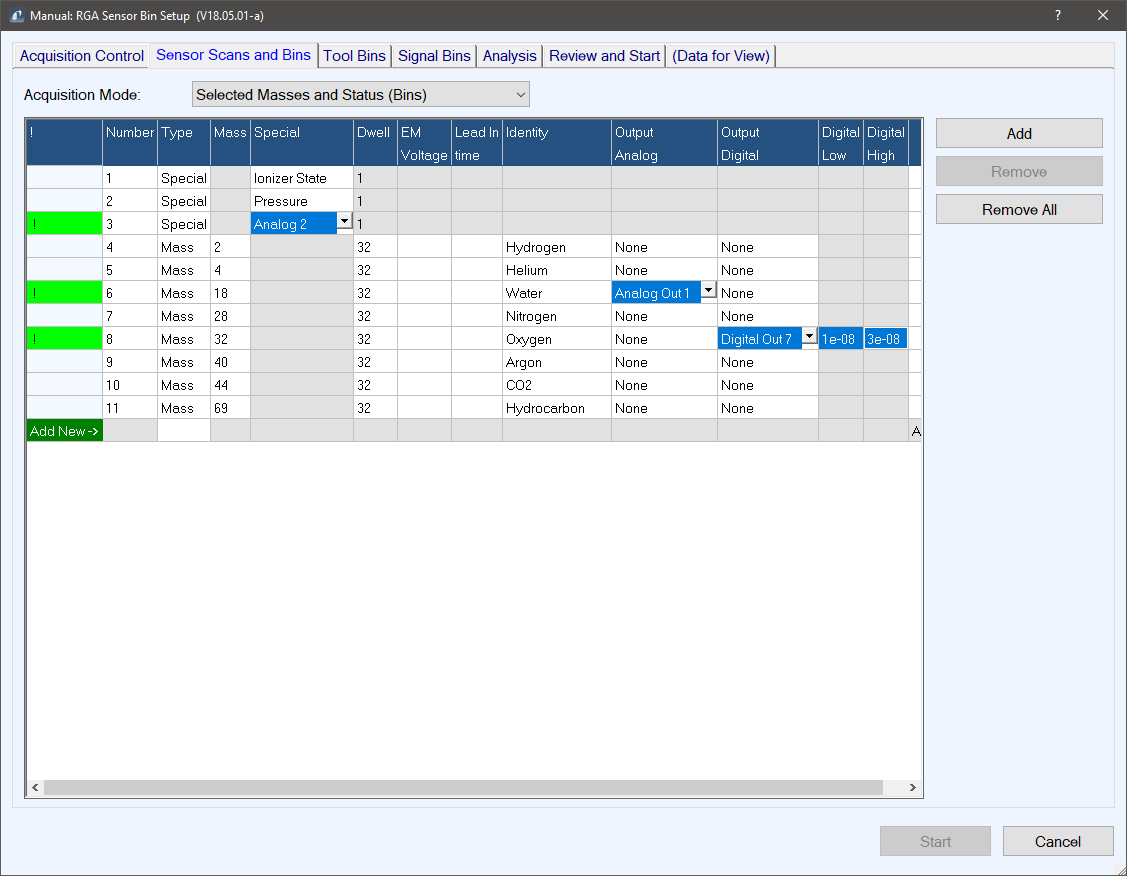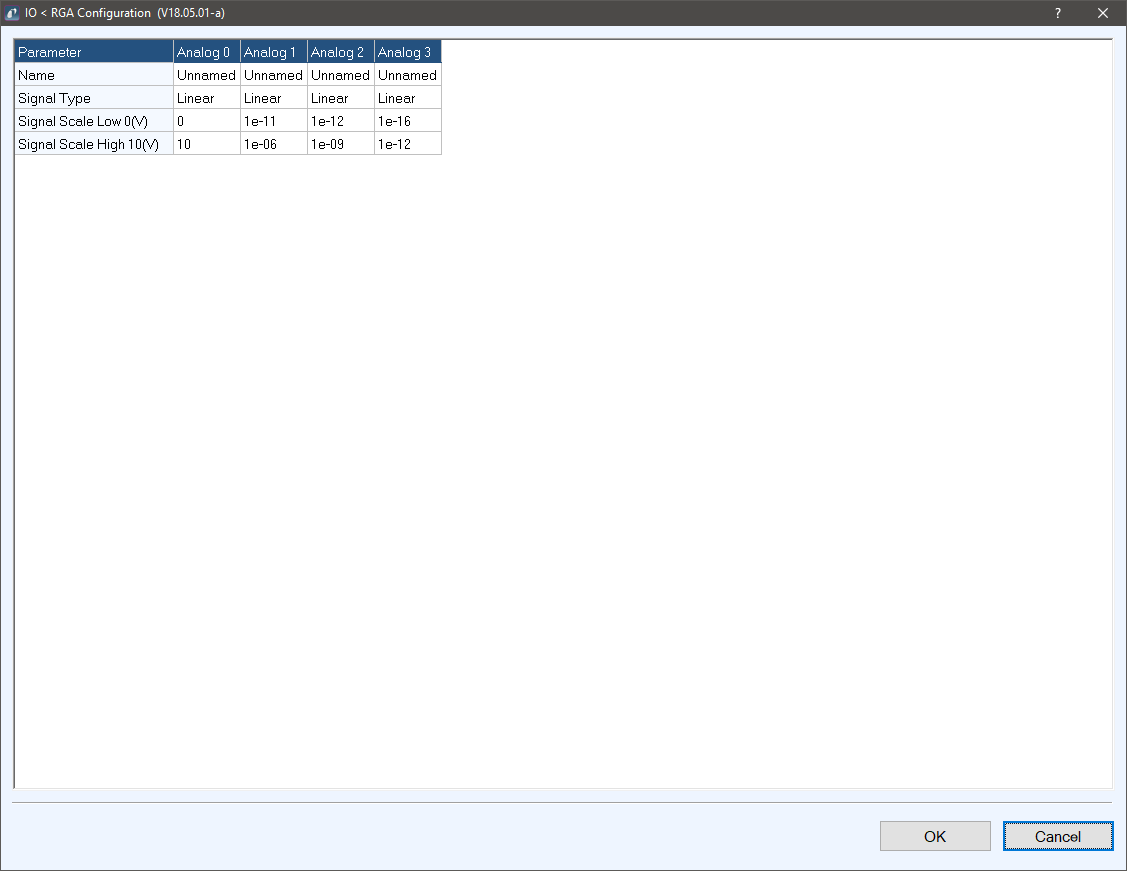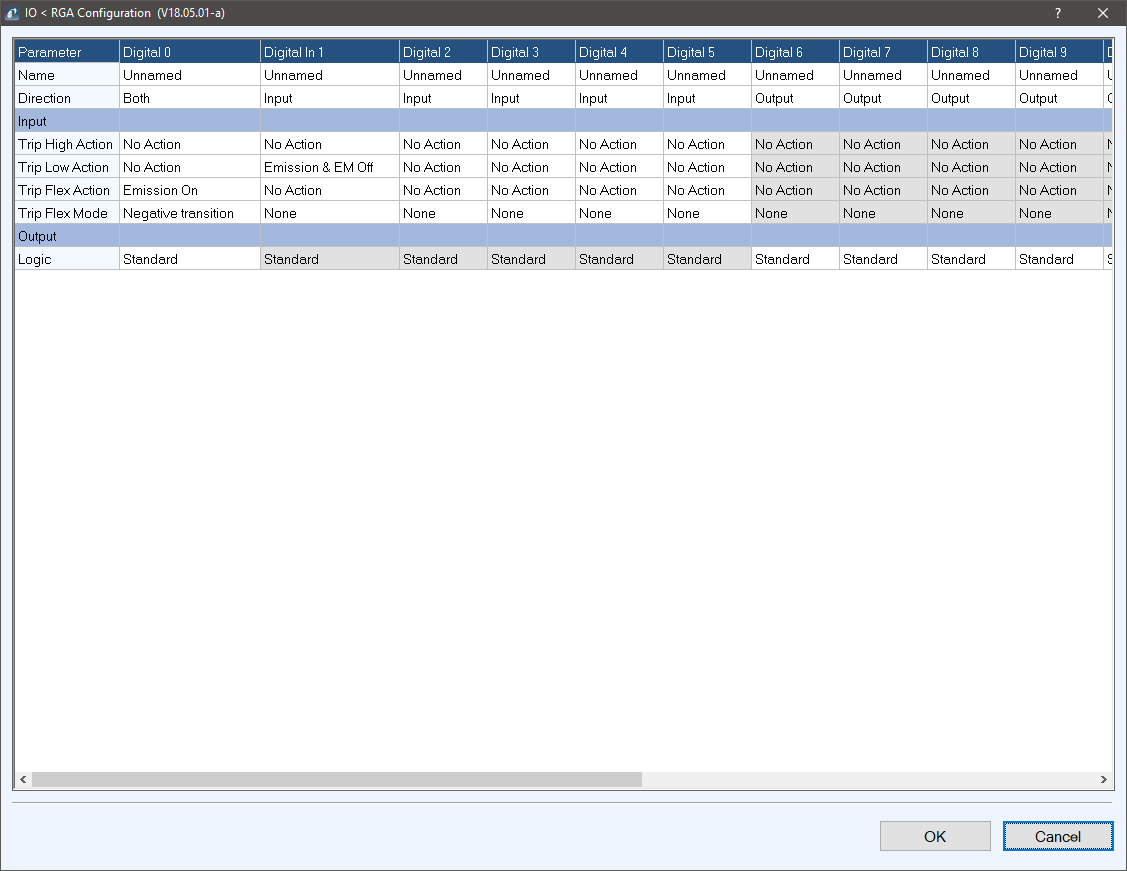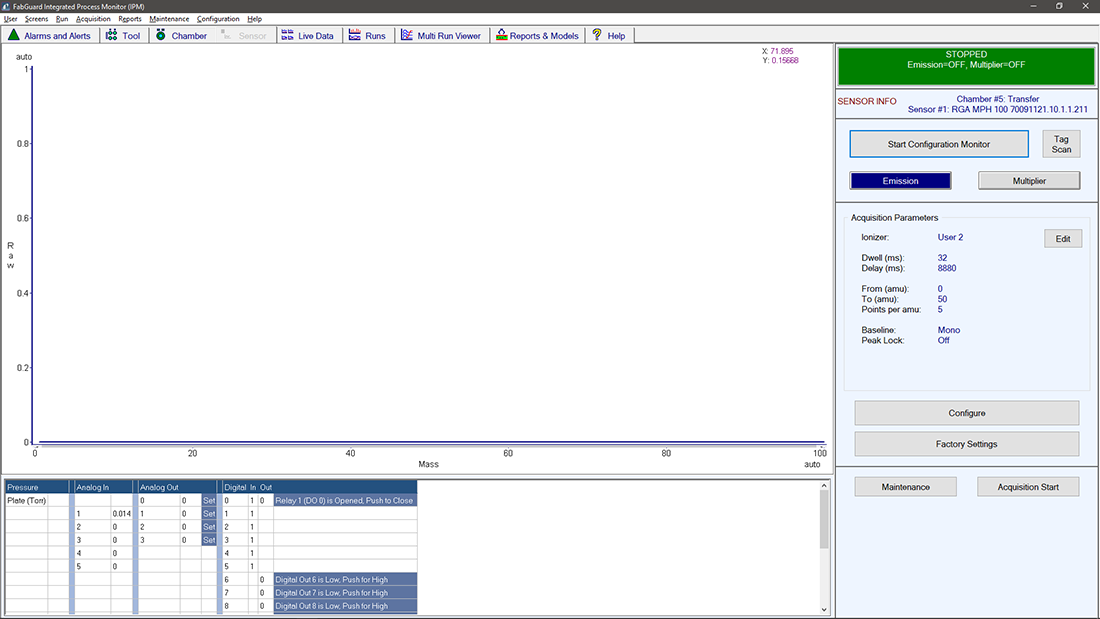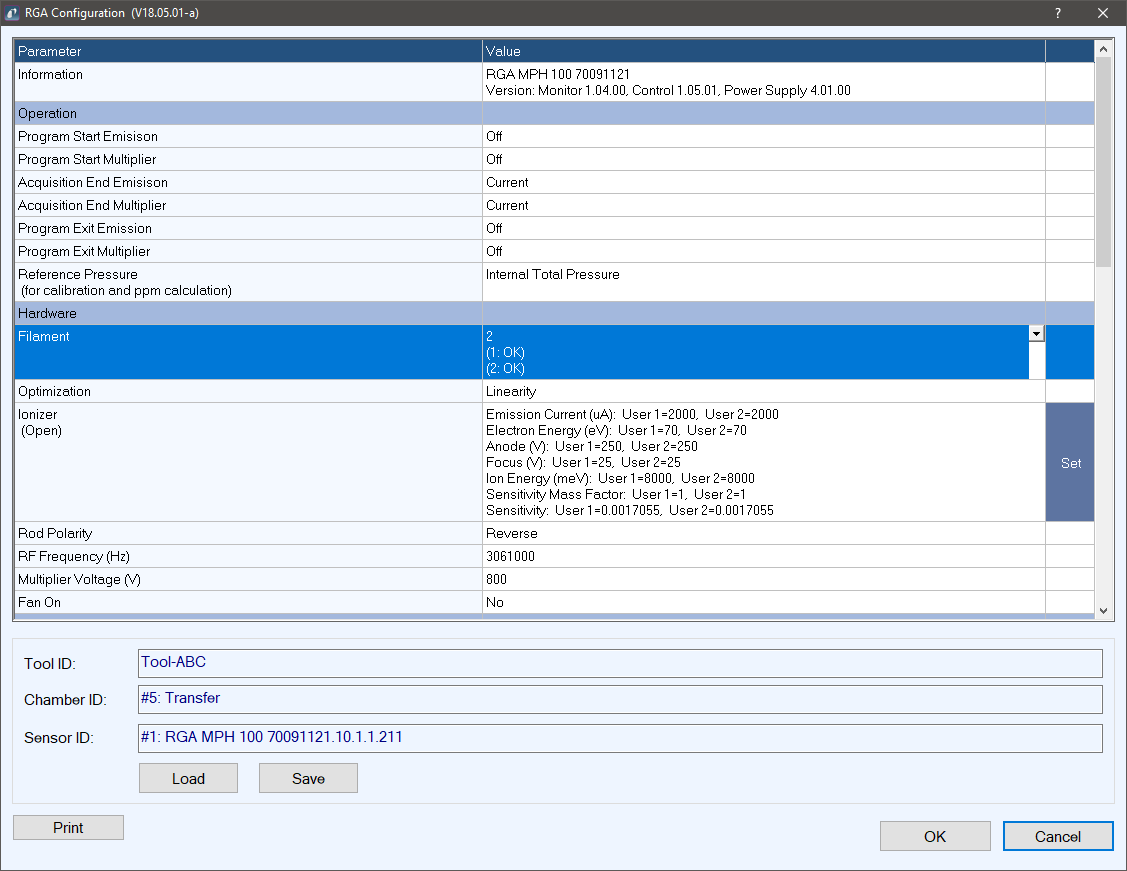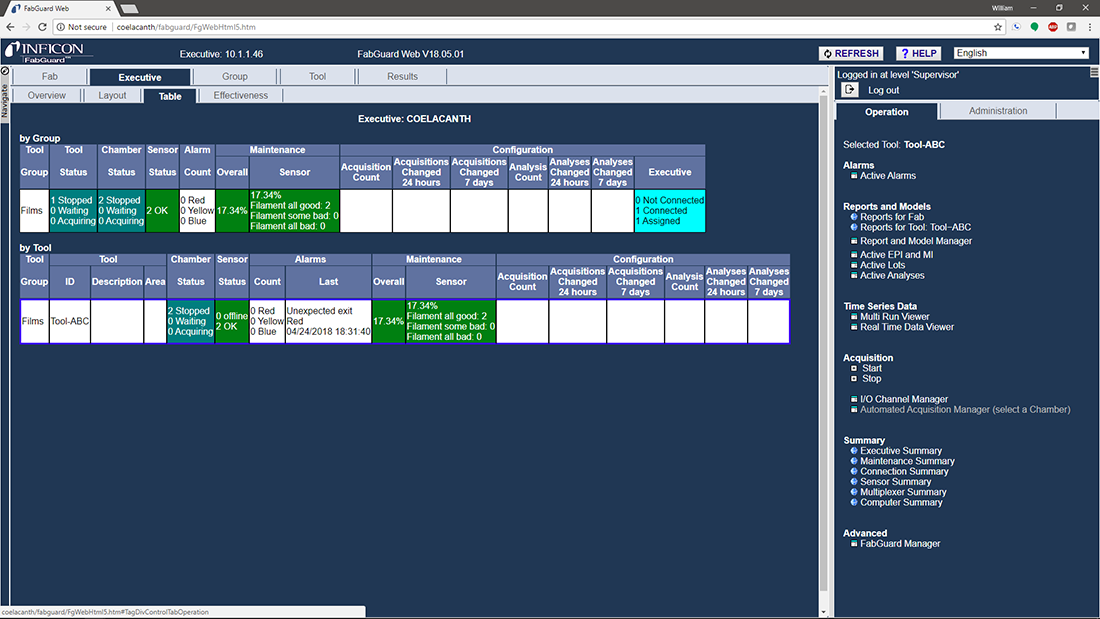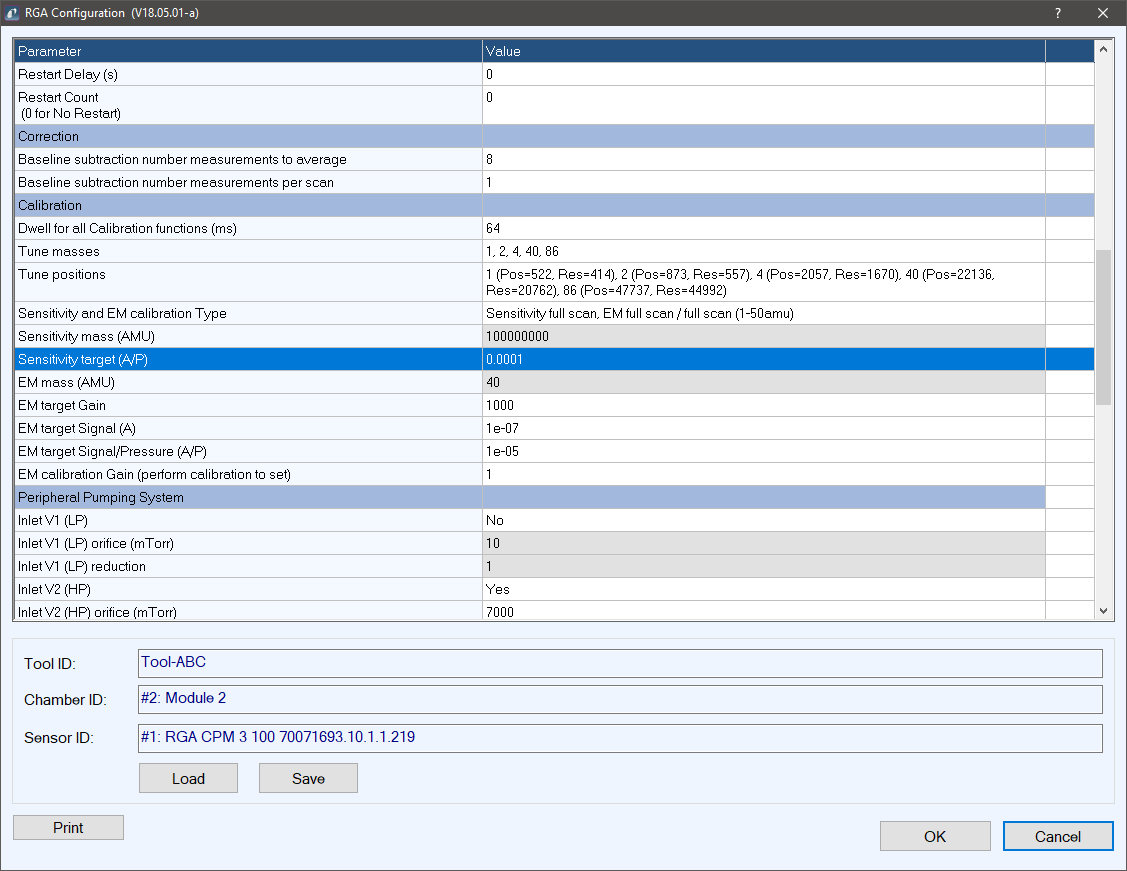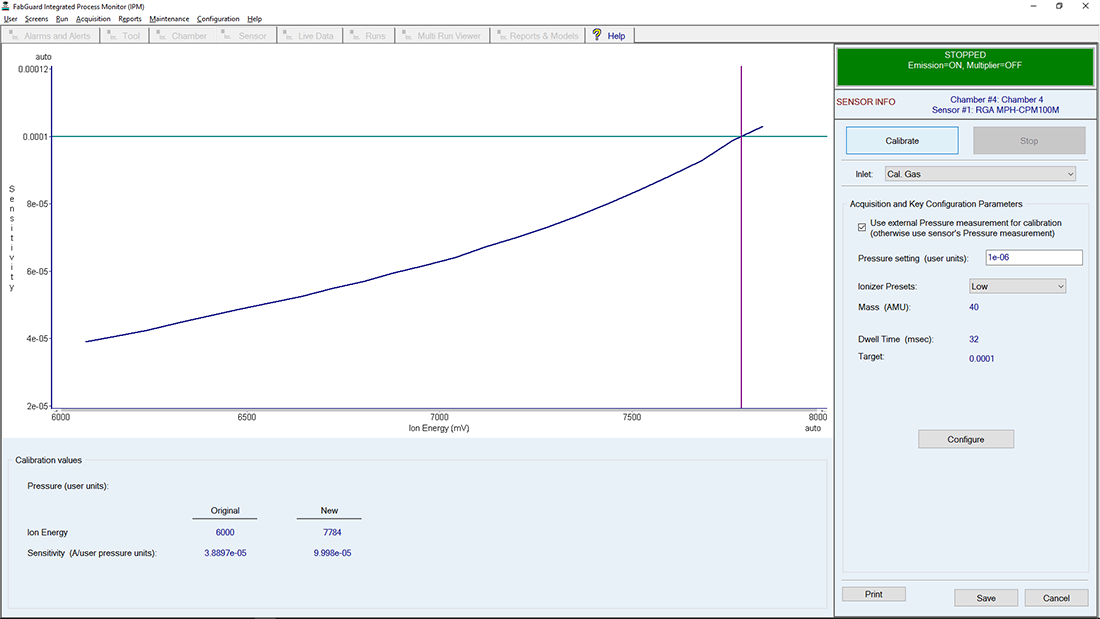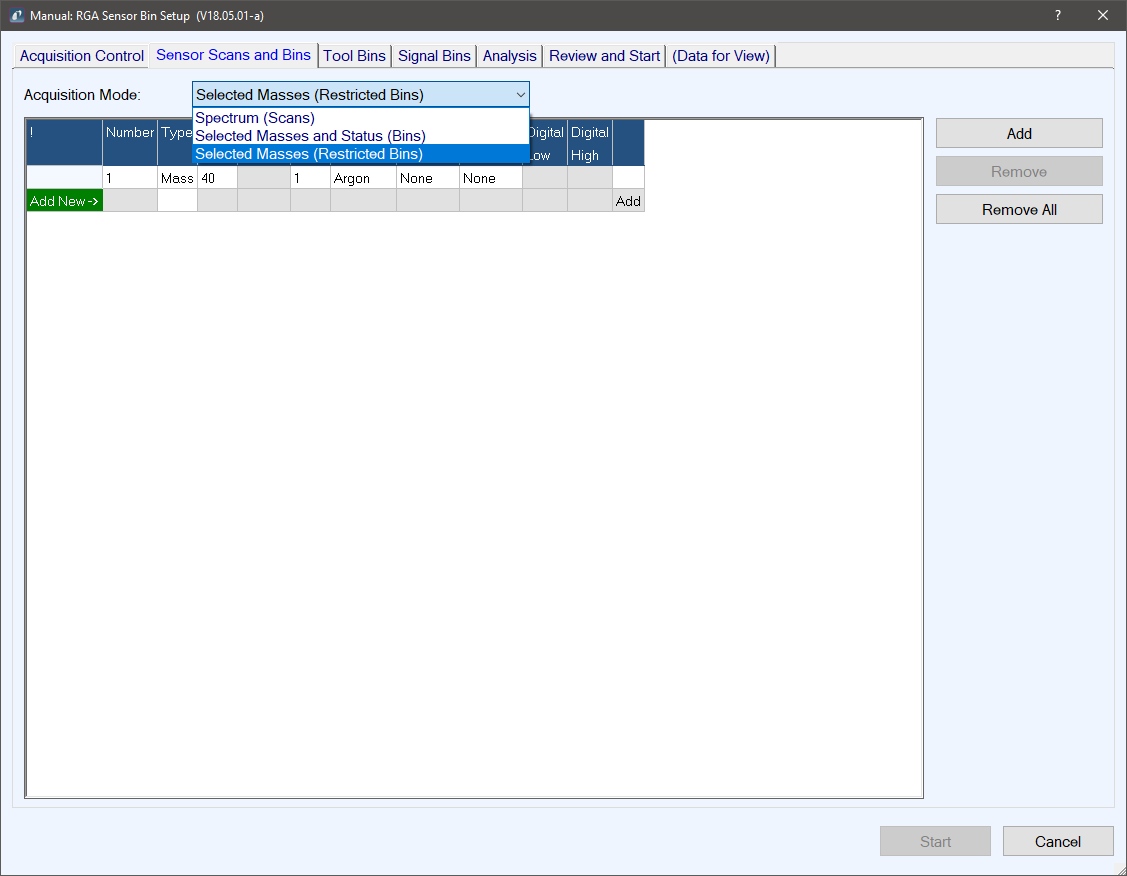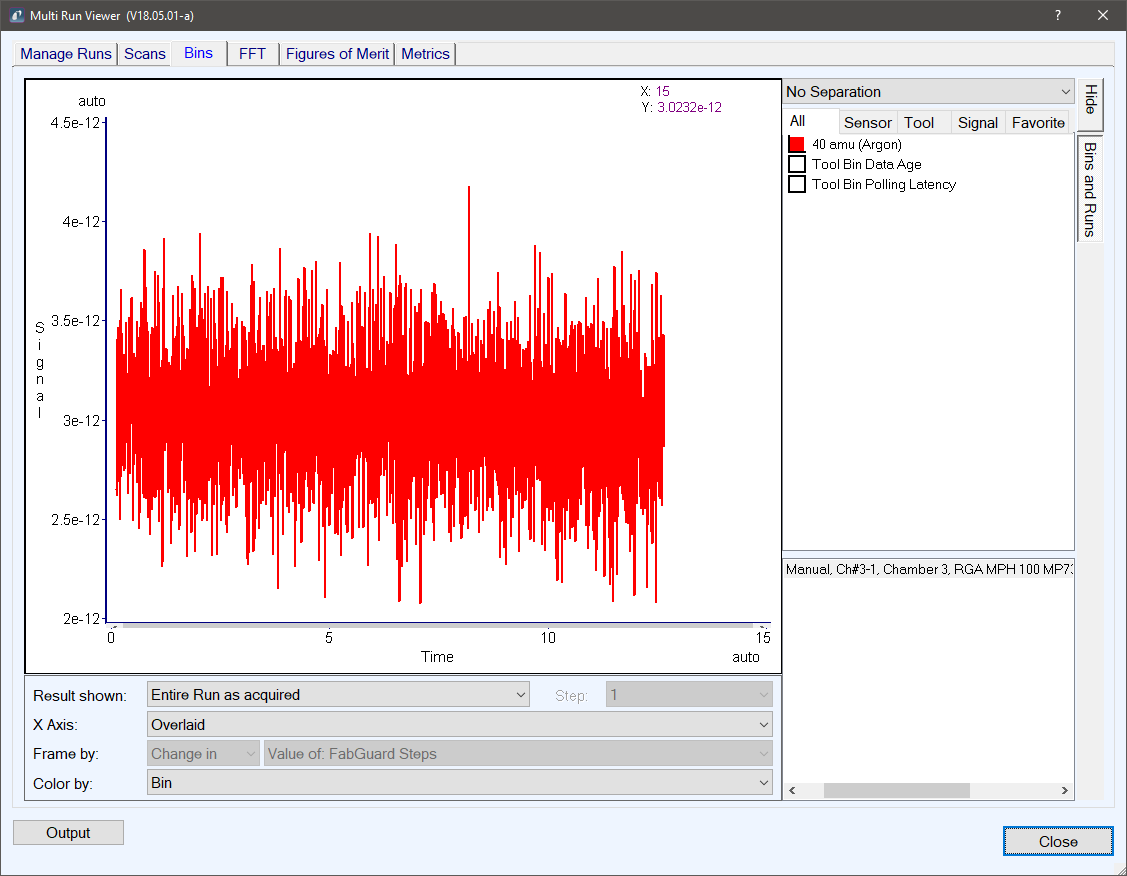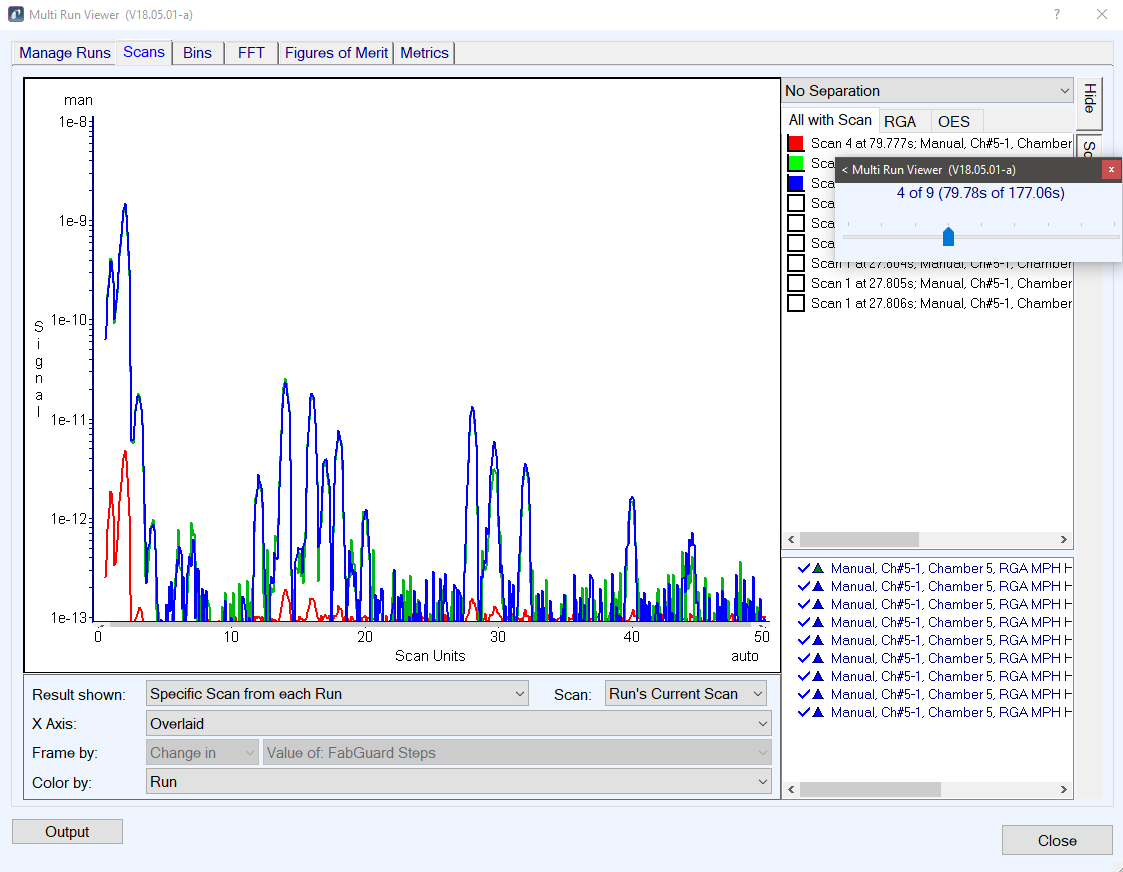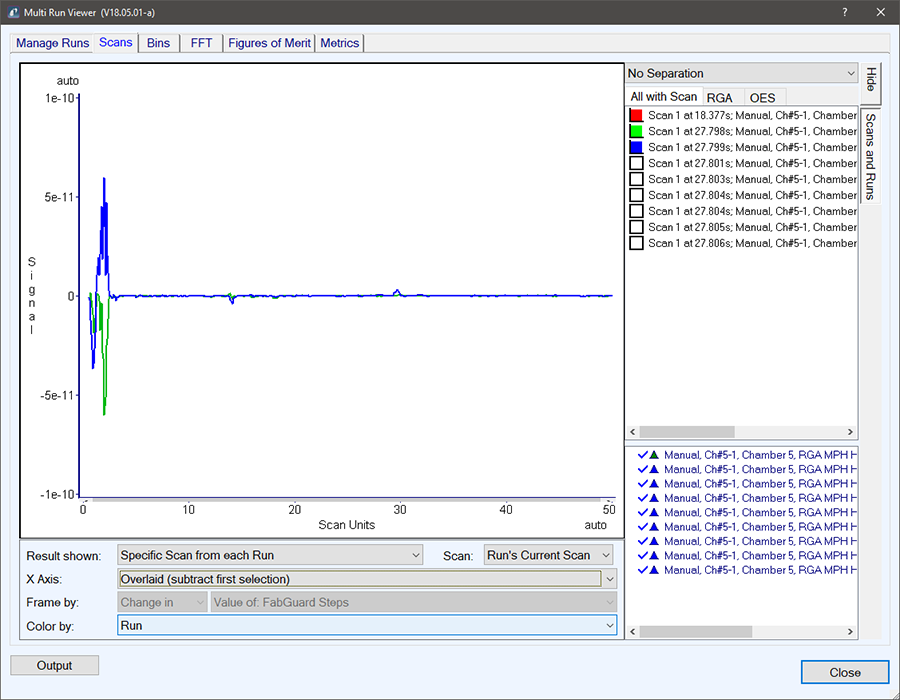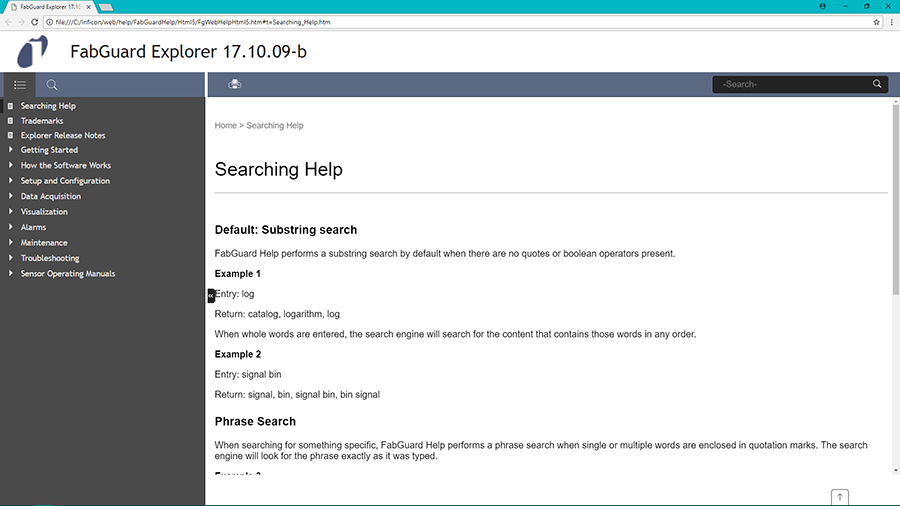May 2018
FabGuard APC v5.00.03 Release »
Metric History in FabGuard Web »
New RGA Features beyond FabGuard version 854 »
FabGuard eOCAP Workflow Framework »
No Logistics from Tool or MES? Try Assigning Them from Signal Bin Logic! »
Understanding Host Name Resolution »
Change the Properties to Make Sure FabGuard Executive Runs as an Administrator »
FabGuard Auto Start and Windows Update Support for Windows 10 »
End-of-Life Support for FabGuard Versions and Microsoft Products »
New RGA Features in FabGuard Beyond version 8.5.4
The FabGuard Product Group has added quite a few RGA related features to FabGuard in the last two years. This article highlights the RGA features that were implemented to provide complex communication strategies to protect sensor operation, include sensor status information in FabGuard Web, and provide improved control of sensor operations in general.
Support for Extended I/O in Transpector® MPx RGAs
There is now an option to purchase Extended I/O with Transpector MPx RGAs. Extended I/O provides additional analog inputs, analog outputs, digital inputs, and digital outputs (some are relays, some are TTL). FabGuard can use these for various purposes, including:
- AI, DI, and DO can provide time series data in Bins. (Bins for DI and DO are created automatically)
- AI and DI can be configured to turn Emission and/or Multiplier on or off
- AO can be configured to output data from a mass Bin
- DO can be configured to change state depending on the value of a mass Bin
- The Sensor Configuration Monitor screen displays all inputs and outputs and allows outputs to be changed
Examples of the FabGuard user interface for these capabilities are shown below (Figures 1-5).
Real Time Expert System State Output
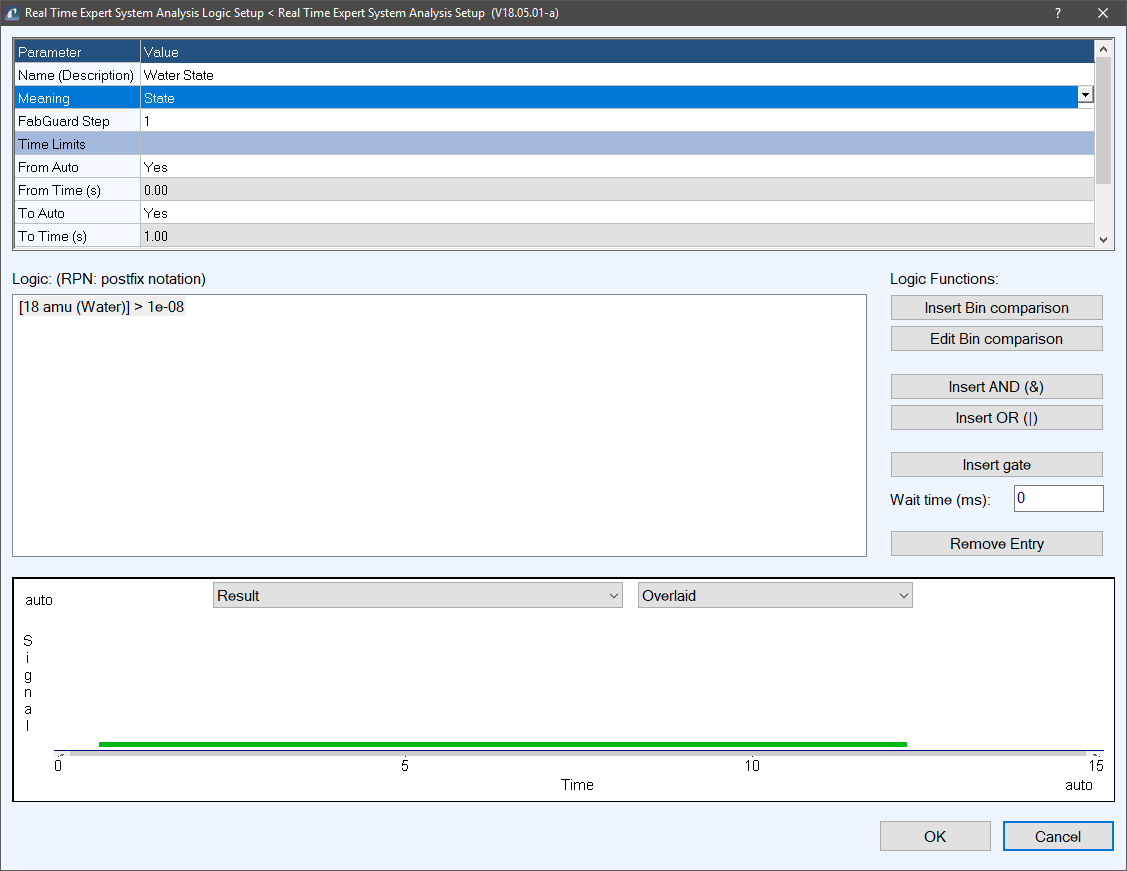
Figure 6: Real Time Expert System Analysis Logic Setup with the Meaning Parameter set to “State”.
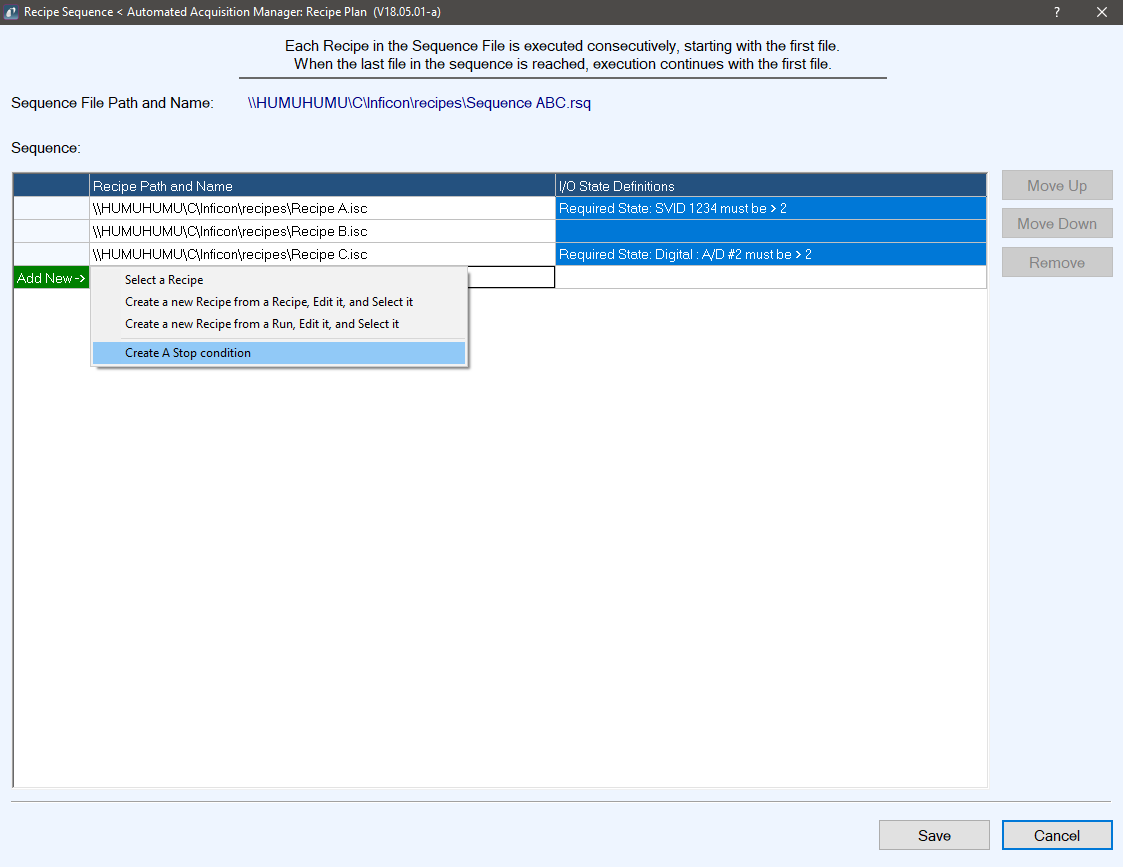
Figure 7: Recipe Sequence screen with I/O State Definitions and a Stop Condition.
There is a new option called “State” for the Meaning parameter in Real Time Expert System Analysis. Unlike all other Meanings, a Logical Analysis with Meaning = “State” sends an IO Output On message every time the logic changes from false to true, and an IO Output Off message every time the logic changes from true to false. All other Meanings send an IO Output On or Off only once per FabGuard step.
The configuration is identical to other Meaning options, except for the setting of the Meaning parameter (Figure 6).
More Advanced Recipe Sequence
The Chamber Recipe Plan now offers more capabilities for Recipe Sequences. This feature is not specific to RGAs, but is expected to be useful for some non-semi RGA applications.
There is now an option to define the required state(s) that must be met before a specific Recipe in the sequence will start executing. This is configured in the new “I/O State Definitions” column of the Recipe Sequence dialog (Figure 7). Note that if a cell in the “I/O State Definitions” column is empty, the corresponding Recipe starts immediately after the previous Recipe execution ends. There is also an option to add a Stop Condition, which ends the Sequence rather than returning to the first Recipe when the last Recipe ends.
Filament Status
For Transpector MPx RGAs, the Sensor Hardware Configuration dialog and FabGuard Web display the filament status. The Transpector MPx firmware determines whether or not a filament is OK each time it attempts to turn on Emission for the selected filament. FabGuard then displays the most recent filament status. Note that the firmware cannot determine the status of a specific filament until it tries to turn Emission on. Therefore, if the firmware has never attempted to turn a specific filament on, it assumes that the filament is OK.
Examples of the filament status in Sensor Hardware Configuration and FabGuard Web are shown below (Figures 8 and 9). The FabGuard Web example is at the Executive-level, but filament status information is also shown at the Group-level and the Tool-level.
There is now an ion source calibration feature for Transpector CPM RGAs. This adjusts Ion Energy to achieve the Sensitivity Target. This can extend the useful lifetime of a CPM in harsh environments, where the Sensitivity decreases relatively rapidly.
The screen captures below show where the Sensitivity Target is set and what the user interface looks like when manually calibrating the ion source (Figures 10 and 11). There is also a Function in a FabGuard Step that can be used to automatically calibrate the ion source.
Option for Faster Acquisition Speed
For Transpector MPx RGAs, there is now an optional Acquisition Mode in a Run or Recipe called "Selected Masses (Restricted Bins)" that makes it possible to acquire data at higher speeds than normal. The maximum data rate is approximately 260 points per second for 1 mass with a 1ms dwell and no baseline. Note that only data from mass Bins is acquired from the RGA in this mode; this means there is no Ionizer State Bin and no other information from the RGA.
Multi Run Viewer Enhancements
Multi Run Viewer can now display scans from sensors that generate scans, e.g., RGA and Quantus® gas analyzers. Scans from different Runs are overlaid; the user can select which scan is plotted for each Run (Figure 14). There is an option to subtract the data in the first selected scan (normally plotted in red) from all other displayed scans (Figure 15). It is also possible to display the ratio of each scan divided by the first selected scan.
Explorer Help
A new HTML-based Help is now included with FabGuard Explorer (Figure 16). This is not RGA specific, but most FabGuard Explorer installations use RGAs.
Summary
These new RGA features provide improved control of sensor operations and visualization of sensor status.
